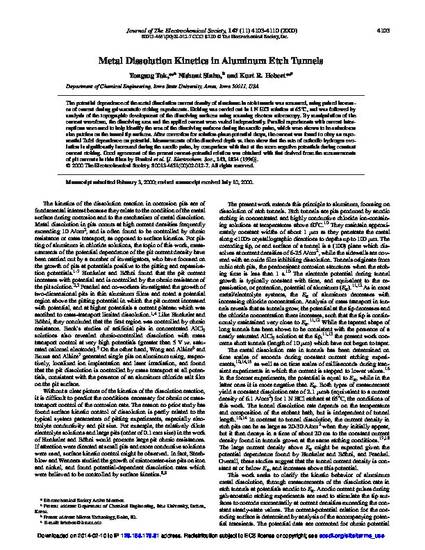
The potential dependence of the metal dissolution current density of aluminum in etch tunnels was measured, using pulsed increases of current during galvanostatic etching experiments. Etching was carried out in 1 N HCl solution at 65°C, and was followed by analysis of the topographic development of the dissolving surfaces using scanning electron microscopy. By manipulation of the current waveform, the dissolving area and the applied current were varied independently. Parallel experiments with current interruptions were used to help identify the area of the dissolving surfaces during the anodic pulse, which were shown to be submicron size patches on the tunnel tip surfaces. After correction for solution‐phase potential drops, the current was found to obey an exponential Tafel dependence on potential. Measurements of the dissolved depth vs. time show that the rate of cathodic hydrogen evolution is significantly increased during the anodic pulse, by comparison with that at the more negative potentials during constant current etching. Good agreement of the present current‐potential relation was obtained with that derived from the measurements of pit currents in thin films by Frankel et al. [J. Electrochem. Soc., 143, 1834 (1996)].
Available at: http://works.bepress.com/kurtr_hebert/19/

This article is from Journal of the Electrochemical Society 147 (2000): 4103–4110. Posted with permission.